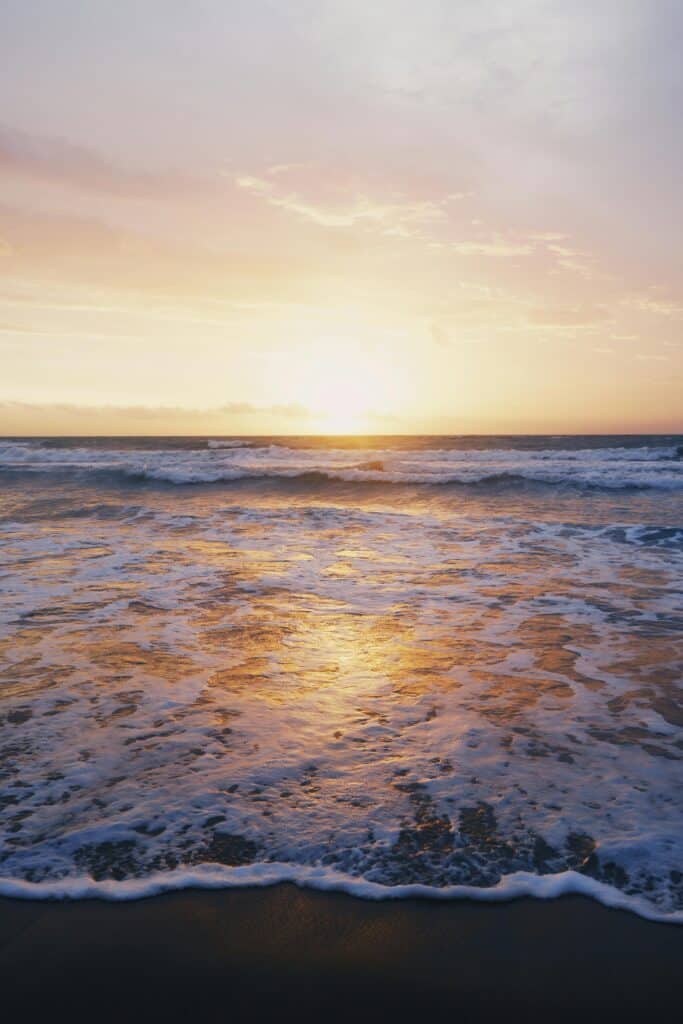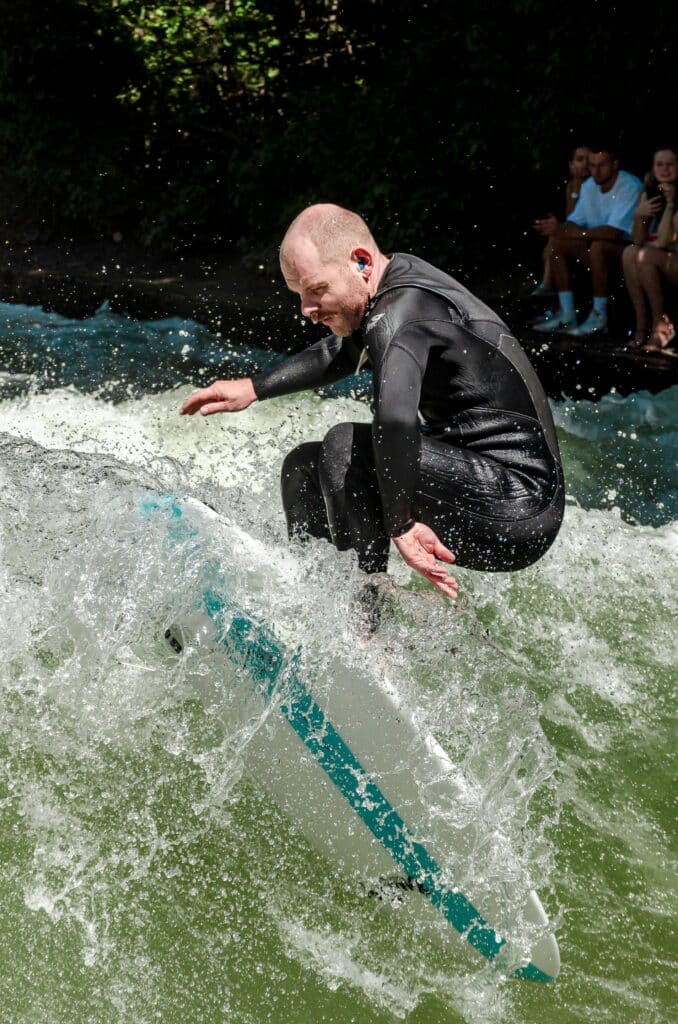Surfing in Costa Rica is an experience like no other, where the warm turquoise waters meet the lush green landscapes of this tropical paradise. Whether you’re a seasoned pro or a beginner looking to catch your first wave, Costa Rica offers an array of world-class surf spots that are sure to leave you in awe. From the famous breaks of Tamarindo to the hidden gems of Santa Teresa, this ultimate guide will provide you with all the insider tips and information you need to plan your perfect surf adventure in Costa Rica. So grab your board, wax it up, and get ready to ride the waves of a lifetime.
Understanding Surfing in Costa Rica
Overview of Costa Rican surf culture
Surfing has a deep-rooted history in Costa Rica, and it has become an integral part of the country’s culture. The laid-back and welcoming nature of the locals, coupled with the pristine and world-class waves, has attracted surfers from all over the globe. Costa Rican surf culture embodies the love for the ocean, respect for nature, and a strong sense of community among surfers.
Popularity of surfing in Costa Rica
Surfing in Costa Rica has gained immense popularity over the years, making it one of the top destinations for wave enthusiasts. Its consistent and diverse surf breaks, ranging from beginner-friendly to expert-level, cater to surfers of all skill levels. Whether you are a seasoned pro or a novice looking to catch your first wave, Costa Rica offers a plethora of options that make it a surfer’s paradise.
Role of surfing in Costa Rican tourism
Surfing has had a significant impact on the tourism industry in Costa Rica. The country’s stunning beaches, warm waters, and world-renowned surf breaks attract millions of visitors each year. Surfing not only contributes to the economy but also promotes sustainable tourism practices. Costa Rica has embraced the sport, offering surf lessons, accommodations near surf spots, and a variety of activities that complement a surfer’s lifestyle.
Ideal Time for Surfing in Costa Rica
Best seasons for surfing
Costa Rica’s Pacific Coast experiences two primary surfing seasons: the dry season (December to April) and the rainy season (May to November). The best waves are typically found during the dry season when the swells are more consistent and the weather is sunny and warm. However, the rainy season offers its own charm and can be a great time for intermediate and advanced surfers looking for more challenging waves.
Off-peak surfing periods
If you prefer to avoid large crowds and have more space to yourself, certain months offer a quieter surfing experience. The months of May, June, September, and October are considered off-peak periods, with fewer tourists and more tranquility in the water. Keep in mind that the waves may not be as consistent during this time, but you can still find hidden gems and enjoy the beauty of Costa Rica’s coastline without the hustle and bustle.
Climate and weather conditions for surfing
Costa Rica enjoys a tropical climate, making it a year-round destination for surfers. The Pacific Ocean provides warm water temperatures that range between 78°F (26°C) and 84°F (29°C) throughout the year, ensuring comfortable surfing sessions. It’s important to note that the rainy season brings occasional afternoon showers, but these passing rains don’t usually interfere with the overall surf experience.

Top Surfing Locations in Costa Rica
Overview of popular surf spots
Costa Rica boasts an impressive array of surf spots, each offering unique characteristics that cater to different surfing styles and skill levels. From the famous breaks at Playa Hermosa and Tamarindo to the hidden gems like Pavones and Witch’s Rock, there is something for everyone. The Pacific Coast is dotted with surf spots renowned for their consistent waves, pristine beaches, and breathtaking scenery, making it a dream destination for surfers.
Details of specific surfing beaches
-
Playa Hermosa: Located in the province of Puntarenas, Playa Hermosa is a world-renowned surf spot known for its consistent waves and powerful breaks. It caters to experienced surfers looking for challenging conditions and adrenaline-pumping rides.
-
Tamarindo: Situated in the Guanacaste province, Tamarindo offers a lively surf scene with waves suitable for beginners and intermediates. Its long sandy beach and warm water make it an ideal spot for learning to surf or improving your skills.
-
Pavones: Located in the southern part of Costa Rica, Pavones is famous for its long left-hand point break, which holds the title of one of the world’s longest waves. It is a mecca for advanced surfers seeking to ride epic waves in a remote and picturesque setting.
Variety of wave conditions in different locations
The surf spots in Costa Rica offer a diverse range of wave conditions, ensuring there is something for every surfer. Whether you prefer powerful and hollow waves, gentle rollers for longboarding, or playful beach breaks, you can find it all along the country’s coastline. The Pacific Coast’s exposure to different swells from both the north and the south provides ample opportunities for surfers to experience various wave types and challenges.
Learning to Surf in Costa Rica
Surf schools and learning institutes
Costa Rica is an excellent destination for learning to surf, thanks to its abundance of surf schools and experienced instructors. From experienced locals to international surf coaches, there are plenty of professionals who can guide you through the process of mastering the waves. Surf schools often offer group lessons, private sessions, and multi-day surf camps tailored to different skill levels and ages, making it accessible for everyone.
Process of learning to surf
Learning to surf is an exhilarating experience that requires patience, practice, and proper guidance. Surf schools in Costa Rica typically start with a safety briefing and teach you about ocean awareness, wave etiquette, and the fundamentals of surfing. You will learn how to paddle, catch waves, stand up on the board, and perform basic maneuvers. With time and practice, you will gain confidence and progress to more challenging waves.
Costs associated with surf lessons
The cost of surf lessons in Costa Rica varies depending on the location, duration, and level of instruction. On average, group lessons can range from $40 to $80 per person, while private sessions can cost between $60 and $120 per hour. Multi-day surf camps generally offer the best value for money, with prices starting from approximately $300 for a week-long program. It is important to research and compare different surf schools to find the one that suits your budget and needs.

Equipment Needed for Surfing in Costa Rica
Surfboards and wetsuits
When it comes to choosing the right surfboard for Costa Rica, it depends on your skill level and the type of waves you’ll be riding. Beginners typically start with a soft-top or longboard, while more advanced surfers opt for shortboards or fish boards. The warm water temperatures in Costa Rica make wetsuits optional, but if you feel the cold or are surfing in the rainy season, a spring suit or lightweight wetsuit might be beneficial.
Safety gear
While surfing in Costa Rica, safety should always be a priority. Apart from a leash to secure your board and protect others in the lineup, it is advisable to wear a rash guard for sun protection. Additionally, reef booties can be useful in areas with sharp volcanic rocks or coral reefs. A quality surf wax is also essential to ensure proper traction on your board and prevent slips.
Where to buy or rent surfing equipment
Costa Rica offers a wide range of surf shops and rental stores where you can buy or rent surfing equipment. Surf towns like Tamarindo, Jaco, and Santa Teresa have a multitude of options, catering to different budgets and preferences. Whether you’re looking to invest in your own gear or want to try out different boards during your stay, you’ll find reputable shops with knowledgeable staff ready to assist you.
Local Surfing Etiquettes and Rules
Common surfing courtesies
Respecting local surf etiquette is crucial to maintaining a friendly and harmonious surfing environment in Costa Rica. Some common courtesies include:
- Taking turns and not dropping in on someone else’s wave.
- Observing right of way rules, where the surfer closest to the peak has priority.
- Avoiding excessive paddling in front of other surfers, hindering their waves.
- Sharing the waves and spreading positivity among fellow surfers.
Local surf etiquette
Understanding and adhering to the local surf etiquette is essential to avoid conflicts and ensure a positive experience. In Costa Rica, it is customary to greet fellow surfers with a friendly “Pura Vida” and show respect for the locals who know the breaks best. It is also encouraged to support local businesses and communities, as they often put in efforts to preserve the natural beauty and integrity of the surf spots.
Legal and safety rules for surfing in Costa Rica
While there are no specific laws governing surfing in Costa Rica, there are general safety guidelines to ensure a safe and enjoyable experience. It is recommended to surf within your skill level, stay aware of your surroundings, and always be cautious of potential hazards such as rocks, reefs, or strong currents. Additionally, respecting marine wildlife by not disturbing or feeding them is crucial to preserving the fragile ecosystem of Costa Rica’s oceans.

Staying Safe While Surfing in Costa Rica
Safety tips for beginner surfers
For beginner surfers in Costa Rica, safety should be a top priority. Some essential safety tips include:
- Always surf with a buddy or in the presence of an instructor.
- Be knowledgeable of the surf spot’s conditions, including tides, currents, and potential hazards.
- Take frequent breaks to rest and hydrate, as surfing can be physically demanding.
- Follow proper stretching routines to prevent muscle strains or injuries.
Dealing with ocean wildlife
Costa Rica’s waters are home to a variety of marine wildlife, including sea turtles, dolphins, and occasional visits from larger creatures like whales or sharks. While encounters with these majestic animals are rare, it is important to respect their space and observe them from a safe distance. Avoid approaching, touching, or feeding any marine life, as it can disrupt their natural behavior and pose a safety risk.
Emergency services and medical care in Costa Rican beaches
In case of any emergencies while surfing in Costa Rica, it is important to be aware of the available resources. Most popular surf towns have lifeguards patrolling the beaches, providing essential water rescue services. Additionally, it is advisable to have travel insurance that covers medical emergencies. There are clinics and hospitals near surf destinations that can provide medical care if needed.
Combining Surfing with Other Activities in Costa Rica
Popular activities for surfers in Costa Rica
Costa Rica offers numerous activities that complement the surfing experience. Some of the popular activities for surfers include:
- Yoga classes to improve flexibility, balance, and relaxation.
- Stand-up paddleboarding (SUP) for exploring calm lagoons and rivers.
- Zip-lining through the lush rainforests to experience an adrenaline rush.
- Horseback riding along the beaches to enjoy the scenic beauty on land.
- Snorkeling or scuba diving to explore the vibrant coral reefs and marine life.
Adventure tourism opportunities
Costa Rica is renowned for its adventure tourism opportunities, and surfers can take advantage of them during their stay. From thrilling white water rafting trips along the rivers to exhilarating canopy tours, there is no shortage of adrenaline-pumping experiences. Exploring the volcanoes, hiking through national parks, or embarking on wildlife safaris are all fantastic ways to immerse yourself in the natural wonders of Costa Rica while taking a break from the waves.
Cultural experiences in Costa Rica
While Costa Rica is known for its stunning beaches and world-class waves, it is also rich in culture and traditions. Visitors can immerse themselves in the vibrant local culture by exploring colorful markets, trying delicious traditional cuisine, and interacting with the warm and welcoming locals. Whether attending local festivals or visiting coffee plantations, these cultural experiences will add depth and authenticity to your surfing trip.

Costa Rican Surfing Events and Competitions
Overview of major surfing events
Costa Rica hosts a variety of surfing events throughout the year, attracting both national and international surfers. Some of the major events include:
- The Essential Costa Rica Surf Pro: This World Surf League (WSL) Qualifying Series event takes place in Jaco, bringing together top-level surfers vying for valuable points.
- The Costa Rica Open: Another WSL Qualifying Series event held in Santa Teresa, showcasing the country’s incredible waves and talented surfers.
- National Surfing Championships: These annual championships feature the best surfers from different regions of Costa Rica competing for national titles.
Participation in surfing competitions
Participating in a surfing competition in Costa Rica can be an exciting and rewarding experience. Whether you are an experienced competitor or new to the world of competitive surfing, there are divisions and categories for all skill levels. Joining a local surf club or contacting the Federación de Surf de Costa Rica can provide information on upcoming competitions and how to register.
Watching surf events as a spectator
If you prefer to watch the pros in action, attending surf events as a spectator is a thrilling experience. You can witness world-class surfers showcasing their skills, enjoy beachside entertainment, and soak up the vibrant atmosphere. Many surf competitions offer spectator areas and live streaming, allowing you to stay connected even if you can’t make it to the beach.
Planning a Surfing Trip to Costa Rica
Preparing for a surfing trip
Planning is key when preparing for a surfing trip to Costa Rica. Here are some essential steps to consider:
- Research surf spots and select the areas that suit your skill level and preferences.
- Check the surf forecast and plan your trip during the ideal season for your desired waves.
- Make a checklist of necessary equipment, including surfboards, wetsuits, and safety gear.
- Learn about local customs, surfing etiquette, and any specific regulations at the surf spots you plan to visit.
- Plan your itinerary, including accommodations, transportation, and any additional activities you want to experience.
Cost and budget considerations
The cost of a surfing trip to Costa Rica can vary depending on factors such as the duration of your stay, accommodation choices, and your preferred level of comfort. Budget travelers can find affordable accommodations, eat at local restaurants, and opt for public transportation to keep costs down. On the other hand, luxury travelers can indulge in high-end resorts and enjoy gourmet meals. It is essential to budget for surf lessons, equipment rentals, and any additional activities or excursions you plan to undertake.
Accommodation options near surf beaches
Costa Rica offers a wide range of accommodation options near surf beaches, catering to different budgets and preferences. Surf hostels are a popular choice among budget travelers and provide a social atmosphere with shared facilities. Guesthouses, boutique hotels, and eco-lodges offer a more comfortable experience, often with proximity to the beach. Luxury resorts and private villas provide high-end amenities and stunning ocean views for those seeking a more indulgent stay.
Transportation to and within Costa Rica
Costa Rica has a well-developed transportation network that allows for easy access to surf spots and various attractions. The most convenient way to reach Costa Rica is by flying into Juan Santamaria International Airport in San Jose or Daniel Oduber Quiros International Airport in Liberia. From there, you can rent a car, take public buses, or arrange private shuttles to reach your desired surf destinations. Within the country, it is advisable to have reliable transportation, as many surf spots may require short drives or hikes to reach.








0 Comments